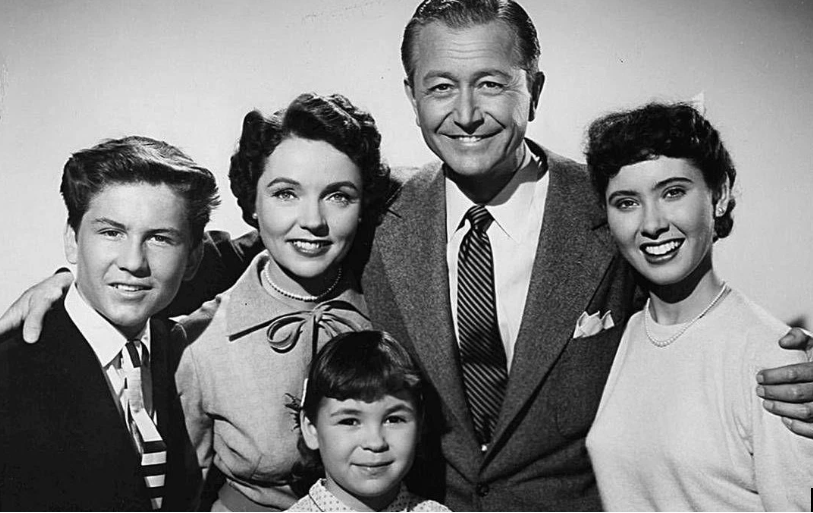
Conservatives have been accused of wanting to take the nation back to an idealized version of a homogenized America, such as the ones portrayed in the squeaky-clean 1950s sitcoms “The Adventures of Ozzie and Harriet” and “Father Knows Best,” before the political and cultural upheaval of the 1960s. (Sometimes they’re right.) Critics point out that wasn’t the reality, nor ideal, for many Americans, particularly those who were excluded from many sectors of society because of their race, sex, or sexual orientation.
Many who defend public education against private-school vouchers are guilty of a similarly misplaced nostalgia.
In a recent Scotusblog symposium on the upcoming U.S. Supreme Court case Espinoza v. Montana Department of Revenue, Alice O’Brien, general counsel at the National Education Association, took Montana’s side in the dispute over whether its constitution can prohibit public funds being directed to private religious schools via parental choice.
She writes that most state constitutional education provisions reflect “common understandings” that include “a uniform quality system of public education is essential to democratic self-governance,” and “entangling the state in funding religious education leads to sectarian conflict.”
This history is true given the fact that many of these provisions have their roots in the 19th century, when Horace Mann led the common school movement, followed by John Dewey in the early 20th century. Making a free education available to the entire public, regardless of a student’s class, gender, religion, ethnicity, or country of origin, was seen as a great social equalizer and assimilator, as well as a way to impart shared civic values on the citizenry, making for a stronger, stable democracy.
David Labaree, professor at the Graduate School of Education at Stanford University, has called public education “an institution that for much of our history helped bring us together into a community of citizens.”
Today that approach appears as quaint as “Little House on the Prairie.” Not that the old days of public education were kumbaya either. Just ask black students who were forced to attend segregated schools.
Common schools and uniform systems of public education require shared beliefs among their stakeholders. Look around the nation’s political and cultural landscape. Do you see a lot of communality?
From professional athletes who kneel during the playing of the national anthem to the meaning of the Betsy Ross flag, Americans can’t even agree on a shared vision of patriotism.
O’Brien worries about vouchers sparking sectarian conflict (ironic, given the fact that Montana’s education provision is a de facto Blaine Amendment, itself a product of anti-Catholic bigotry) when schools already are riven by the secular conflicts of the culture wars.
The Cato Institute has cataloged the discord in K-12 education in its Public Schooling Battle Map (currently undergoing maintenance, but many of the items are available on Twitter at @PubSchoolFights). There are the evergreen clashes between parents and school officials over textbooks, reading assignments, and curricula. But there’s also the teacher who got fired for using an incorrect pronoun for a student. Dress codes that critics say unfairly impact black girls. Schools named after historical figures some find problematic.
Our tribal instincts are being triggered constantly. If one side came out in favor of oxygen, the other side would refuse to breathe.
Americans have been drifting apart for a while, and it’s not getting any better. Perhaps that’s to be expected in a nation of 330 million people that is more pluralistic than it has ever been, and growing more so. The public can’t even agree on the purpose of public education.
Into this bubbling cauldron we’re going to impose a uniform system of schooling that inculcates civic values.
Whose values?
These clashes in part reflect changing mores, but also the atomization of American culture and the customization of individual lifestyles. The old gatekeepers have fallen and the doors flung open to a myriad of choices for the populace. Personal technology facilitates people choosing what they want to consume (be it entertainment, information, food, or virtually any product), when and where they want to consume it. They can select exactly what aligns with their tastes and their daily schedules.
These modern citizens are not going to subject themselves to a one-size-fits-all education. They expect to get what they want, and demand the same freedom of choice in other aspects of their lives.
Believing that centralized education delivery systems can meet all these desires is as misguided and unrealistic as thinking what America needs is more Ward and June Cleavers.
The ones most satisfied with public education will be the ones setting the agenda. Replacing those in power making the “wrong” decisions with those who will exercise the “right” judgment only trades one perceived oppressor for the other, leaving the minority chafing at the majority’s new rules imposed on them. The disputes may change, but the frictions remain. Worse, when policy becomes a zero-sum calculation, these back-and-forth battles elevate the stakes of elections, which intensifies political strife. Rinse and repeat.
The relief valve for this pressure cooker is to give more families a diverse array of education options and the freedom to choose the ones that best align with their children’s needs and their values. Access cannot be income dependent. That’s why vouchers, scholarships and other assistance are necessary to provide equal opportunity.
That approach still promotes the ideal of public investment in education for all, without limiting it to a single delivery system – one that is ill-suited to accommodate the competing wants and needs of its diverse clientele in a modern world (if it ever truly was).
There’s no going back. Nostalgia should not be an excuse to deny giving more parents more choices in their children’s education. Education should reflect the way the world is, not the way people want it to be.


